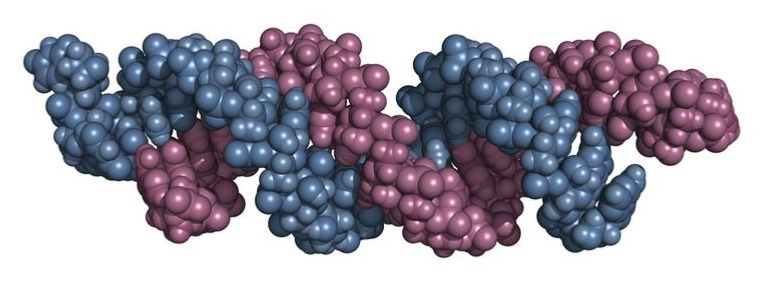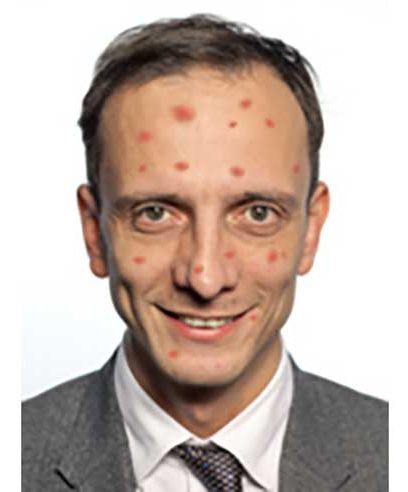Simplified molecular computing with DNA. Just mix test tubes.
Researchers have designed self-assembling DNA molecules with unprecedented reprogrammability.

These findings support the idea that cognitive decline is in part due to the aging of blood cells, which are produced in the bone marrow.
Abstract
Restoration of cognitive function in old mice by transfer of blood or plasma from young mice has been attributed to reduced C–C motif chemokine ligand 11 (CCL11) and β2-microglobulin, which are thought to suppress neurogenesis in the aging brain. However, the specific role of the hematopoietic system in this rejuvenation has not been defined and the importance of neurogenesis in old mice is unclear. Here we report that transplantation of young bone marrow to rejuvenate the hematopoietic system preserved cognitive function in old recipient mice, despite irradiation-induced suppression of neurogenesis, and without reducing β2-microglobulin. Instead, young bone marrow transplantation preserved synaptic connections and reduced microglial activation in the hippocampus. Circulating CCL11 levels were lower in young bone marrow recipients, and CCL11 administration in young mice had the opposite effect, reducing synapses and increasing microglial activation.

We have talked about the potential of partial cellular reprogramming in previous articles, and today, we want to draw attention to a new paper that promises to further refine reversal of epigenetic aging in cells.
As we age, our cells experience alterations to their epigenetic markers, and this changes gene expression, which is proposed to be a primary reason we age. Recently, there has been considerable interest in resetting these epigenetic markers to reverse cellular aging, and this paper builds on that.
Three of the study’s authors, Prof. Vittorio Sebastiano, Jay Sarkar, and Marco Quarta, have founded Turn.bio, a biotech company that is working to bring partial cellular reprogramming to humans. The company is also currently enjoying the leadership of Gary Hudson from Oisin Biotechnologies, who is standing in as CEO to help the company get off the ground and funded.

Imagine that… The earth is round.
Many people view pollutants and pathogens as separate causes of illness. However, recent research indicates that the two can interact, changing how people and animals respond to infectious diseases. According to an article in Chemical & Engineering News (C&EN), the weekly newsmagazine of the American Chemical Society, environmental pollutants appear to weaken the immune system, reduce vaccine efficacy and increase pathogen virulence.
More than 20 years ago, researchers showed that exposing mice to low levels of a dioxin called 2,3,7,8-tetrachlorodibenzo–p-dioxin made them more susceptible to influenza virus. Since then, several studies have suggested that other chemicals, such as perfluorooctanoic acid, mercury and arsenic, can also alter animals’ immune responses and decrease their resistance to infectious diseases. And epidemiological studies in humans have linked chemical exposure in the womb to a child’s increased risk of infectious disease. However, scientists are only now beginning to unravel how this happens, Senior Editor Britt Erickson writes.
Compounds called per- and polyfluoroalkyl substances (PFAS) are widely used in household products, such as food packaging, nonstick products and cleaners. Researchers have linked elevated concentrations of some PFAS in mothers’ blood to reduced responses to vaccinations and more illnesses in their children. Similarly, arsenic exposure in the womb has been associated with decreased levels of antibodies against diphtheria in vaccinated Bangladeshi children. Evidence also suggests that some chemicals, such as zinc or lead, may contribute to the rise of multidrug-resistant strains of methicillin-resistant Staphylococcus aureus (known as MRSA). Such interactions are complex and will require more interdisciplinary research in environmental health and infectious disease, Erickson writes.


An intriguing new study, led by scientists from the University of Colorado Boulder, suggests an aging gut microbiome may be somewhat responsible for the degradation in cardiovascular heath that tends to appear as we grow older. The study is yet another addition to the growing body of evidence affirming the role gut bacteria plays in age-related disease.
In Nature Neuroscience, researchers present a new method to grow a cerebral organoid from human stem cells that exhibits axon outgrowth with specific tract-like patterns. Read the paper here: https://go.nature.com/2HMQxtF
This new method could open a major avenue towards the full regeneration of body parts.
A new study has revealed a method of switching the early growth response of DNA on and off, opening the future possibility of regenerating human body parts with the use of genetic editing.

“We have long known that oxidative stress and inflammation are involved in making arteries unhealthy over time, but we didn’t know why arteries begin to get inflamed and stressed. Something is triggering this,” Seals said. “We now suspect that, with age, the gut microbiota begins producing toxic molecules, including TMAO, which get into the blood stream, cause inflammation and oxidative stress and damage tissue.”
As our collection of resident gut bacteria changes with age, it increasingly produces harmful metabolites that damage veins and blood vessels, driving disease, a new study suggests.
